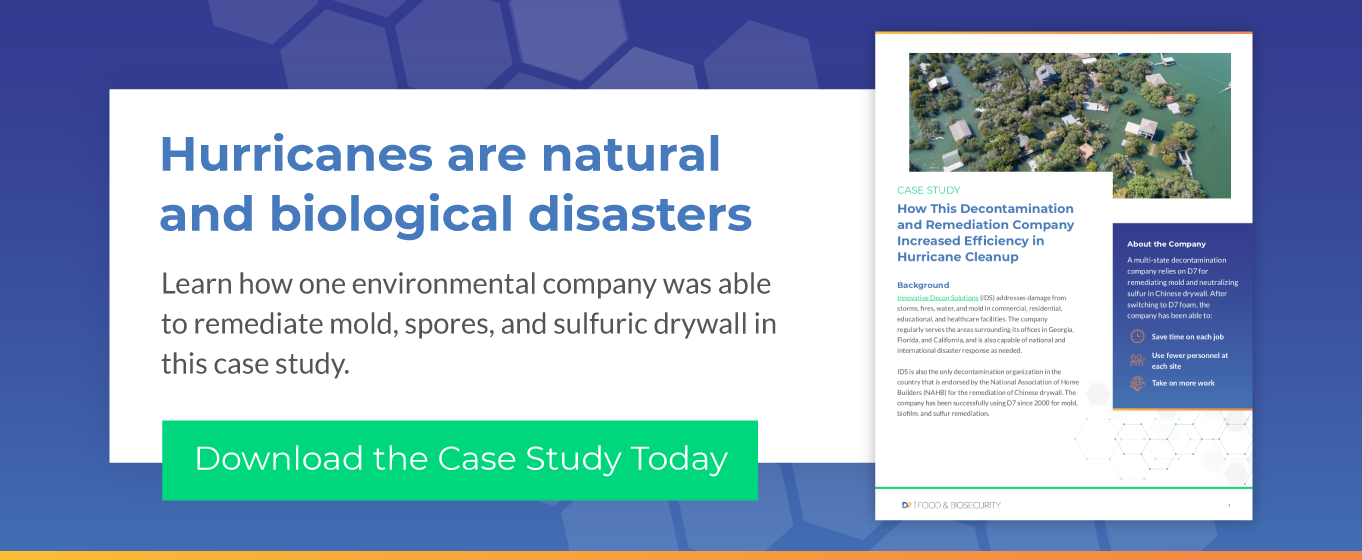Hurricanes and natural disasters are terrifying in the moment, with property damage, injuries, and other life disruptions contributing to the overall trauma of the situation. However, the consequences can linger long after the headlines have subsided. Standing water, flooded homes, and excess humidity in indoor environments create a breeding ground for mold, fungus, and bacteria. The destructive force of a hurricane can also damage storage areas and potentially expose people to harmful chemicals.
Fatalities After Hurricane Maria
In September of 2017, Hurricane Maria made landfall on Puerto Rico, interrupting the clean water supply and causing mass power outages that lasted for months after the skies had cleared. With an estimated $90 billion dollars in damages, Maria ranks as one of the most destructive hurricanes to hit the U.S., falling behind only Katrina and Harvey. Although the official death count was only 64, a Harvard study conservatively estimates the toll to be closer to 4,600, and most likely in excess of 5,000. This number takes into account fatalities related to interruptions in medical service and a lack of access to electricity.
Another study that examined the number of excess deaths caused by the hurricane found that around 1,200 excess deaths after the hurricane were related to:
- Heart disease
- Diabetes
- Alzheimer’s
- Septicemia
- “Other” causes
Although the death toll of a hurricane might seem low on paper, the indirect damage and subsequent deaths it causes can be significantly worse.
Diseases in Puerto Rico After Hurricane Maria
In addition to the fatalities caused by the disaster, both immediately and in the months that followed, there were also a number of diseases in Puerto Rico after Hurricane Maria. The Yale School of Medicine reported that the bacterial disease leptospirosis, which is spread by rats, was prevalent in Puerto Rico after Hurricane Maria and that outbreaks were linked to the cleanup efforts.
Flooding caused by the hurricane exposed people to potentially contaminated water, and subsequent flooding of canals continued the risk of exposure, especially for cleanup crews that did not have proper personal protective equipment. Another study, which was scheduled to be released at a conference that has been cancelled due to the COVID-19 outbreak, indicated that many residents experienced respiratory-related illnesses up to one year after the hurricane, specifically those located in areas that had flooded.
Health Risks After Hurricanes
Although leptospirosis rose to the top of the diseases that spiked after Hurricane Maria, any number of water-borne diseases present a risk after major flooding or in the presence of standing water. Depending on the local conditions, these might include cholera, schistosomiasis, gastrointestinal diseases, tuberculosis, and more. When people don’t have access to clean water, soap, or sanitizing products, diseases can continue to spread beyond the initial source of exposure.
The growth of mold in homes and other buildings also presents a serious health risk, especially for people with compromised systems, allergies, or existing respiratory issues. Once established inside walls, mold can continue to grow even after a flood has subsided, impacting residents for the long term. These health risks are compounded when the healthcare system is overburdened or if people can’t get access to treatment and medications.
A D7 Hurricane Remediation Case Study
Another example of an unpredicted and unfortunate outcome after a natural disaster is the use of Chinese drywall after Hurricane Katrina. Excess sulfur in the building material has had a lasting impact on indoor air quality, the health of occupants, and the integrity of the surrounding building materials. One way to solve the problem is to replace the drywall, but this is costly and not an option for many homeowners. Decon7 worked closely with one remediation company to come up with a better solution that was not only more affordable for clients, but also more efficient and safer for cleanup crews. Read more about this case study and how the company was able to remediate impacted spaces and increase efficiency at the same time.


